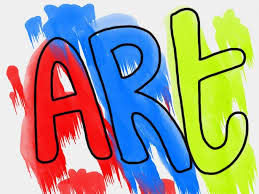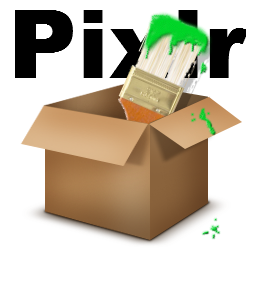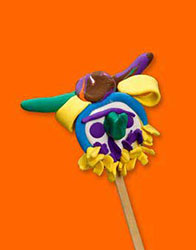Please keep on scrolling down to find resources
Click on the links
Follow You Tube Channel HERE
Kids Art Hub
Click HERE to visit
Click HERE to Open Kaleidoscope Painter
Click HERE for Easy Painting Ideas
Scholastic Art and Writing
Click HERE for Easy Painting Ideas
Examples of styles
Evolution of Picasso's Self-Portraits
Your
May 2018 digital issue of SchoolArts is here!

Inspiring Creativity Since 1901
It’s here!

Click the cover to start reading your issue.
In this issue . . .
Theme: Fun/Games
“As an art teacher, I have found that it is helpful in many situations to be willing
to be silly, funny, or humorous.”
Read
more from our editor, Nancy Walkup.
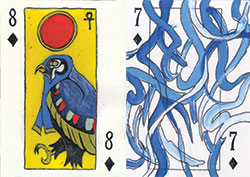
All
Decked Out
High-school students create playing cards based on the art they viewed on a museum field trip.
Read
more...
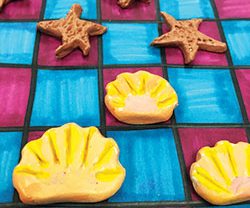
The
Art of Checkers
Elementary students design and sculpt their own checkers boards and game pieces.
Read
more...
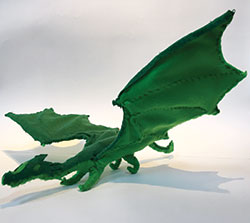
Little
Monsters
Middle-school students sketch and paint imaginary creatures and turn their designs into 3D toys.
Read
more...
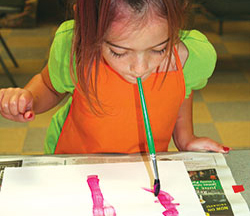
Elephant
Painting
Young students paint without using their hands and learn about how people with disabilities are challenged everyday.
Read
more...
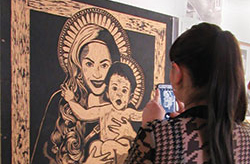
Name
that Artist
Students participate in a game of visual clues to learn about works of art.
Read
more...
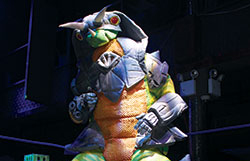
Looking
and Learning
Learn about the city-crushing monster battles of artist collective Kaiju Big Battel.
Read
more…

Theme: Fun/Games
“As an art teacher, I have found that it is helpful in many situations to be willing to be silly, funny, or humorous.”
Read more from our editor, Nancy Walkup.
 |
All Decked Out |
| High-school students create playing cards based on the art they viewed on a museum field trip. Read more... |
|
 |
The Art of Checkers |
| Elementary students design and sculpt their own checkers boards and game pieces. Read more... |
|
 |
Little Monsters |
| Middle-school students sketch and paint imaginary creatures and turn their designs into 3D toys. Read more... |
|
 |
Elephant Painting |
| Young students paint without using their hands and learn about how people with disabilities are challenged everyday. Read more... |
|
 |
Name that Artist |
| Students participate in a game of visual clues to learn about works of art. Read more... |
|
 |
Looking and Learning |
| Learn about the city-crushing monster battles of artist collective Kaiju Big Battel. Read more… |
|
AEP 2018 References
The left side of the brain is responsible for controlling the right side of the body. It also performs tasks that have to do with logic, such as in science and mathematics. On the other hand, the right hemisphere coordinates the left side of the body, and performs tasks that have do with creativity and the arts.
Dates
|
Topic / Agenda
|
Genre
|
Art History
|
Medium
|
Mar 6-8
|
1) Introduction: top 10 paintings 2) Review Genres and Mediums 3) Hands on: Draw your
shoes or book bag
|
Still Life
|
Masters Overview
|
Pencil Drawing
|
Mar 13-15
|
1) Understand form shadows and cast shadows
|
Still Life
|
|
|
Mar 20-22
|
Landscape
|
|
||
Apr 3-5
|
1) Understand style and color theory
|
Landscape
|
||
Apr 10-12
|
1) Understand painting techniques
|
Scene
|
||
Apr 17-19
|
1) Understand figure drawing
|
Scene
|
||
Apr 24-26
|
1) Understand content
|
Historical
|
|
|
May 1-3
|
1) Understand technique
|
Portraits
|
||
May 8-10
|
1) Understand movements
|
Portraits
|
||
May 15-18
|
1) Understand modernism
|
Modern
|
||
May 22-24
|
1) Understand contemporary art
|
Contemporary
|
Mixed Media
|
|
May 29-31
|
1) Develop own style
|
Own Style
|
Mixed Media
|
For more information visit: PAMM
Drawing Animals from Words
Click on the link HERE
Drawing with Numbers as a Base
Art Technology Classes
If you are taking the Art Technology class you can download Artweaver HERE
And click HERE to view an Artweaver Basics Video Tutorial
2D GIF Animation with Artweaver
Click HERE for Kleki Paint
Click HERE for TATE PAINT
Get ChatterPix HERE
Fun Art Websites and Instructional Videos
Explore color names
Art Dictionary
Exploratory Art
6th graders: click HERE to explore ideas and get inspired!
Discover How to Draw and Paint Whatever you Want!
Explore the fun lessons on this blog!
Learn how to draw animals!
Some of the World's most Famous Paintings
One of the highest honors for an artist is to be considered and regarded as a master. They desire to produce artwork that is remembered forever. The following are the most famous paintings of all time, recognized by many folks who hail from all the corners of the world.
Click on these links for details: Famous Paintings , a list of the top 20 and World Famous Paintings.
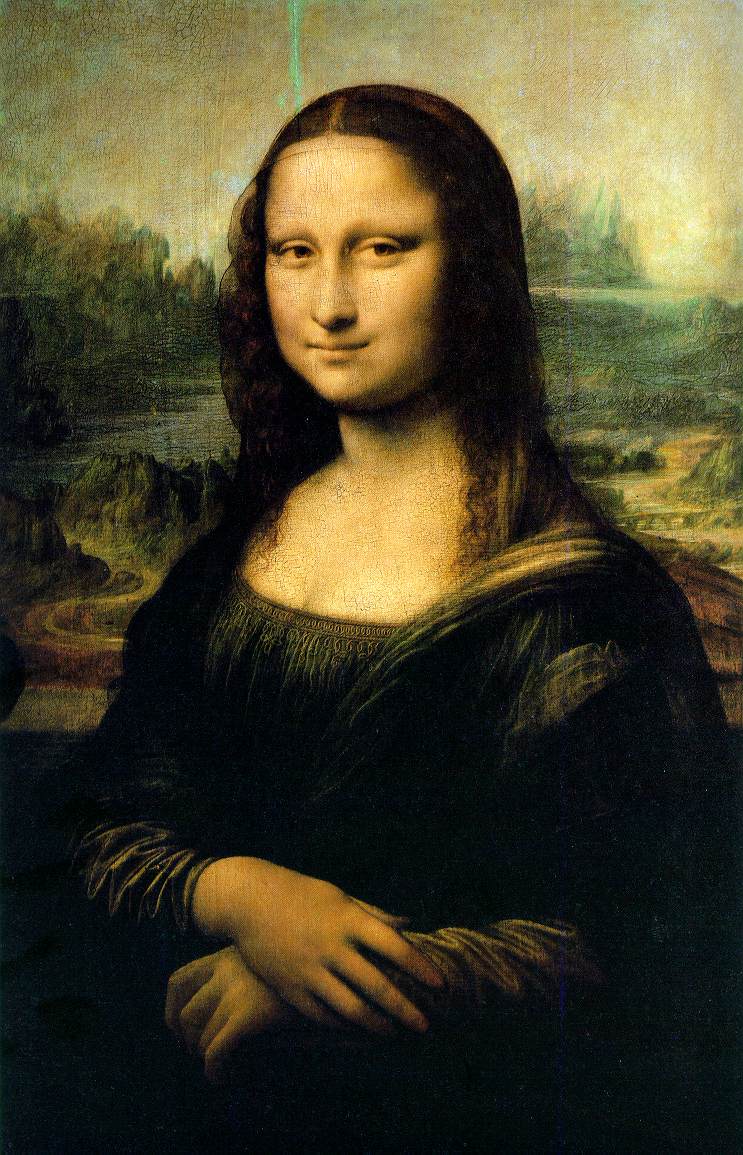
Mona Lisa by Leonardo da Vinci
Click on these links for details: Famous Paintings , a list of the top 20 and World Famous Paintings.

Mona Lisa by Leonardo da Vinci
History of Art Timeline
The history of art is immense, the earliest cave paintings pre-date writing by almost 27,000 years! If you're interested in art history, the first thing you should do is take a look at this table which briefly outlines the artists, traits, works, and events that make up major art periods and how art evolved to present day:
Art Periods/
Movements |
Characteristics
|
Chief Artists and Major Works
|
Historical Events
|
Stone Age (30,000 b.c.–2500 b.c.)
|
Cave painting, fertility goddesses, megalithic structures
|
Lascaux Cave Painting, Woman of Willendorf, Stonehenge
|
Ice Age ends (10,000 b.c.–8,000 b.c.); New Stone Age and first permanent settlements (8000 b.c.–2500 b.c.)
|
Mesopotamian (3500 b.c.–539 b.c.)
|
Warrior art and narration in stone relief
|
Standard of Ur, Gate of Ishtar, Stele of Hammurabi's Code
|
Sumerians invent writing (3400 b.c.); Hammurabi writes his law code (1780 b.c.); Abraham founds monotheism
|
Egyptian (3100 b.c.–30 b.c.)
|
Art with an afterlife focus: pyramids and tomb painting
|
Imhotep, Step Pyramid, Great Pyramids, Bust of Nefertiti
|
Narmer unites Upper/Lower Egypt (3100 b.c.); Rameses II battles the Hittites (1274 b.c.); Cleopatra dies (30 b.c.)
|
Greek and Hellenistic (850 b.c.–31 b.c.)
|
Greek idealism: balance, perfect proportions; architectural orders(Doric, Ionic, Corinthian)
Parthenon, Myron, Phidias, Polykleitos, Praxiteles
Athens defeats Persia at Marathon (490 b.c.); Peloponnesian Wars (431 b.c.–404 b.c.); Alexander the Great's conquests (336 b.c.–323 b.c.)
Roman (500 b.c.– a.d. 476)
Roman realism: practical and down to earth; the arch
Augustus of Primaporta, Colosseum, Trajan's Column, Pantheon
Julius Caesar assassinated (44 b.c.); Augustus proclaimed Emperor (27 b.c.); Diocletian splits Empire (a.d. 292); Rome falls (a.d. 476)
Indian, Chinese, and Japanese(653 b.c.–a.d. 1900)
Serene, meditative art, and Arts of the Floating World
Gu Kaizhi, Li Cheng, Guo Xi, Hokusai, Hiroshige
Birth of Buddha (563 b.c.); Silk Road opens (1st century b.c.); Buddhism spreads to China (1st–2nd centuries a.d.) and Japan (5th century a.d.)
Byzantine and Islamic (a.d. 476–a.d.1453)
Heavenly Byzantine mosaics; Islamic architecture and amazing maze-like design
Hagia Sophia, Andrei Rublev, Mosque of Córdoba, the Alhambra
Justinian partly restores Western Roman Empire (a.d. 533–a.d. 562); Iconoclasm Controversy (a.d. 726–a.d. 843); Birth of Islam (a.d. 610) and Muslim Conquests (a.d. 632–a.d. 732)
Middle Ages (500–1400)
Celtic art, Carolingian Renaissance, Romanesque, Gothic
St. Sernin, Durham Cathedral, Notre Dame, Chartres, Cimabue, Duccio, Giotto
Viking Raids (793–1066); Battle of Hastings (1066); Crusades I–IV (1095–1204); Black Death (1347–1351); Hundred Years' War (1337–1453)
Early and High Renaissance (1400–1550)
Rebirth of classical culture
Ghiberti's Doors, Brunelleschi, Donatello, Botticelli, Leonardo, Michelangelo, Raphael
Gutenberg invents movable type (1447); Turks conquer Constantinople (1453); Columbus lands in New World (1492); Martin Luther starts Reformation (1517)
Venetian and Northern Renaissance (1430–1550)
The Renaissance spreads north- ward to France, the Low Countries, Poland, Germany, and England
Bellini, Giorgione, Titian, Dürer, Bruegel, Bosch, Jan van Eyck, Rogier van der Weyden
Council of Trent and Counter-Reformation (1545–1563); Copernicus proves the Earth revolves around the Sun (1543)
Art that breaks the rules; artifice over nature
Tintoretto, El Greco, Pontormo, Bronzino, Cellini
Magellan circumnavigates the globe (1520–1522)
Baroque (1600–1750)
Splendor and flourish for God; art as a weapon in the religious wars
Reubens, Rembrandt, Caravaggio, Palace of Versailles
Thirty Years' War between Catholics and Protestants (1618–1648)
Neoclassical (1750–1850)
Art that recaptures Greco-Roman grace and grandeur
David, Ingres, Greuze, Canova
Enlightenment (18th century); Industrial Revolution (1760–1850)
Romanticism (1780–1850)
The triumph of imagination and individuality
Caspar Friedrich, Gericault, Delacroix, Turner, Benjamin West
American Revolution (1775–1783); French Revolution (1789–1799); Napoleon crowned emperor of France (1803)
Realism (1848–1900)
Celebrating working class and peasants; en plein air rustic painting
Corot, Courbet, Daumier, Millet
European democratic revolutions of 1848
Capturing fleeting effects of natural light
Monet, Manet, Renoir, Pissarro, Cassatt, Morisot, Degas
Franco-Prussian War (1870–1871); Unification of Germany (1871)
Post-Impressionism (1885–1910)
A soft revolt against Impressionism
Van Gogh, Gauguin, Cézanne, Seurat
Belle Époque (late-19th-century Golden Age); Japan defeats Russia (1905)
Fauvism and Expressionism (1900–1935)
Harsh colors and flat surfaces (Fauvism); emotion distorting form
Matisse, Kirchner, Kandinsky, Marc
Boxer Rebellion in China (1900); World War (1914–1918)
Cubism, Futurism, Supremativism, Constructivism, De Stijl (1905–1920)
Pre– and Post–World War 1 art experiments: new forms to express modern life
Picasso, Braque, Leger, Boccioni, Severini, Malevich
Russian Revolution (1917); American women franchised (1920)
Dada and Surrealism (1917–1950)
Ridiculous art; painting dreams and exploring the unconscious
Duchamp, Dalí, Ernst, Magritte, de Chirico, Kahlo
Disillusionment after World War I; The Great Depression (1929–1938); World War II (1939–1945) and Nazi horrors; atomic bombs dropped on Japan (1945)
Abstract Expressionism (1940s–1950s) and Pop Art (1960s)
Post–World War II: pure abstraction and expression without form; popular art absorbs consumerism
Gorky, Pollock, de Kooning, Rothko, Warhol, Lichtenstein
Cold War and Vietnam War (U.S. enters 1965); U.S.S.R. suppresses Hungarian revolt (1956) Czechoslovakian revolt (1968)
Postmodernism and Deconstructivism (1970– )
Art without a center and reworking and mixing past styles
Gerhard Richter, Cindy Sherman, Anselm Kiefer, Frank Gehry, Zaha Hadid
Nuclear freeze movement; Cold War fizzles; Communism collapses in Eastern Europe and U.S.S.R. (1989–1991)
Reference:
http://www.dummies.com/how-to/content/art-history-timeline.html
For more details go to: http://iris.nyit.edu/arthistory/pptshows.html
Check it out here: Inside Art
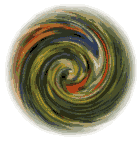
For more details go to: http://iris.nyit.edu/arthistory/pptshows.html
An History of Art Game Quest!
Check it out here: Inside Art

Check out these Magnet Art Schools Resources!
These are resource websites from South Miami K-8 Center - An Art Magnet School
Computer Art Technology (click on link)
Culturally Inspired Art (click on link)
List of Schools near Oak Grove Elementary with Magnet Art Programs
 |  | ||
| |||
Welcome To The Oak Grove Elementary Art Club Blog!
Welcome artists and parents!
This blog page is dedicated to the art club students. It is a place to:
-retrieve the assignments
-get forms
-ask questions
-share opinions and suggestions
-or just talk about art!
In this post you will find all the art club forms and previous activities as a reference and miscellaneous art resources.
This blog page is dedicated to the art club students. It is a place to:
-retrieve the assignments
-get forms
-ask questions
-share opinions and suggestions
-or just talk about art!
In this post you will find all the art club forms and previous activities as a reference and miscellaneous art resources.
Art Club Schedule
Please keep this schedule handy for reference.
2011-2012
The dates always fall on the last Wednesday of each month.
The set schedule is from 2:00 pm to 3:00 pm. |
Month
|
Dates
|
September
|
28
|
October
|
26
|
November
|
30
|
January
|
25
|
February
|
22
|
March
|
28
|
April
|
25
|
May
|
30
|
Thank you for your collaboration in helping your child becoming a better artist.
Art Club Activities
Goals
Bring artists or hobbyists together to improve skills, compare work, share in the cost of materials and participate in different group events. The members explore various techniques and use an assortment of mediums that they may or may not experience in regular art classes.
Schedule of activities
During the first half hour we explore something new together; the rest of the time members experiment or work on their own. Art Club members are required to complete weekly drawing assignments in their sketchbook.
Group Shows
A group show is one way to get all of the artists in an art club working toward a common goal and motivated to meet project deadlines. A simple art club show for young students may involve setting aside a school hallway or wall in the library and inviting families to the opening of the exhibition, which remains in place for fellow students to see.
Field Trips
Art club field trips bring members into contact with other art in the region. A visit to an art museum or local gallery opening keeps the club members aware of current trends, while also bringing them face-to-face with the art history of textbooks.
Art clubs also could visit artists' studios. The members can watch professional artists at work and learn about the tools needed to produce sculptures, paintings and photographs.
Sales
Art club sales serve two distinct purposes: to put the club's work on public display and to provide funding for the club and income for its members. Sales held in a public place may help stir up interest in the club. To sell to a more discerning group of buyers, strike a deal with a shop or gallery owner.
Visiting Artists
Spending time with practicing artists can be an invaluable tool for art students. Art clubs can serve as hosts for artists who live locally or are in town for an exhibition or sale. Artists may even be able to find apprentices or interns from among an art club's members, offering those with a serious interest in art a chance to see the process up close. All members can benefit from an artist's life story and the chance to ask questions about surviving in the challenging and competitive art market.
Arts and Technology
We will explore many tools using technology. We will also visit interactive art softwares, museum art sites and lessons.
Tools
How to Draw (http://www.capta.org/sections/programs-smarts/websites-visual-arts.cfm#draw )
Arts Lessons/Projects (http://www.capta.org/sections/programs-smarts/websites-visual-arts.cfm#projects )
Arts Lessons/Projects (http://www.capta.org/sections/programs-smarts/websites-visual-arts.cfm#projects )
Famous Artists for Children and Teens (http://www.capta.org/sections/programs-smarts/websites-visual-arts.cfm#famousartists )
Museum Art Resources for Young Children (http://www.capta.org/sections/programs-smarts/websites-visual-arts.cfm#museumart )
History Through Art (http://www.capta.org/sections/programs-smarts/websites-visual-arts.cfm#famousartists )
Science and Math Through Art (http://www.capta.org/sections/programs-smarts/websites-visual-arts.cfm#science )
Art Games (http://www.capta.org/sections/programs-smarts/websites-visual-arts.cfm#games )
Art and Politics (http://www.capta.org/sections/programs-smarts/websites-visual-arts.cfm#politics )
Illustration (http://www.capta.org/sections/programs-smarts/websites-visual-arts.cfm#illustration )
Comics
http://www.billybear4kids.com/Learn2Draw/PaintProgram/drawing.htm
Art and Politics (http://www.capta.org/sections/programs-smarts/websites-visual-arts.cfm#politics )
Illustration (http://www.capta.org/sections/programs-smarts/websites-visual-arts.cfm#illustration )
Comics
http://www.billybear4kids.com/Learn2Draw/PaintProgram/drawing.htm
Lessons
Art Lessons from Artyfactory - draw, paint and design (http://www.artyfactory.com/sitebody/gallery1.htm )
Communicating Ideas -posters, newspapers, comic strips (http://www.learnalberta.ca/content/elci/index.html)
Smart Board Community: Art Enrichment Activity (http://www.diigo.com/annotated/4933303c58ada0d7cd406ca0b52bbe62 )
Joy2Learn | Arts Education Programs for Children | E-Presentations (http://joy2learn.org/epres.php )
Museums
Miami Children Museum http://www.miamichildrensmuseum.org/exhibits/virtualtour.html
For Kids: The Getty Museum and Whyville (Education at the Getty)
(http://www.getty.edu/education/kids_families/do_at_home/index.html )
(http://www.getty.edu/education/kids_families/do_at_home/index.html )
LACMA Collections Online, Los Angeles County Museum of Art (http://www.lacma.org/collection/index.html )
Artsonia Kids Art Museum — The Largest Student Art Gallery on the Web! (http://www.artsonia.com/ )
Museum of Modern Art (MoMA) http://www.moma.org/explore/collection/index
Le Louvre http://www.louvre.fr/en/visites-en-ligne
The American Museum of Photography Guided Tour
Tour of The Andy Warhol Museum
Tour The Collection at The National Gallery of Art
Tour the DeCordova 35 acre Sculpture Park
Tour the Metropolitan Museum of Art
Tour The National Museum of Women in the Arts
Tour the Tokugawa Family Art Museum in Nagoya, Japan
Tour the Smithsonian - The World's Largest Museum
Tour World Art Treasures
The tutorials Ellipse and Curve will show you how to use the tools you will need to make a successful drawing of a hamster. Try this first. Drawing a Hamster: http://esbergen.org/ict_Year_1_and_2/Paint/ellipse.htm
Watch the Tutorials, keep them in the background and look at them now
Shading
Shading Techniques: http://fc08.deviantart.net/fs70/i/2010/012/6/c/Shading_Techniques_by_Yukina_Kun62.jpg
Exercise 1
Graduated Tone
Graduated tone can be used to create the illusion of space and form in a drawing. It is a very useful skill to develop.
Use a B, 2B, or darker grade of pencil for your shading. Lighter grades (H, 2H etc.) will not give enough depth to your darkest tones.
Just start by shading the area you wish to be dark and slowly build up the tone. As you work towards the light, gradually ease the pressure on your pencil until you can no longer the mark it makes. You then patiently repeat this process, building a depth to the shading, adjusting any irregular areas and trying to keep the tonal changes as smooth as possible until you achieve the intensity of tone that you desire.
Below are some more exercises of increasing difficulty which will test your shading skills to the limit.
Museum of Modern Art (MoMA) http://www.moma.org/explore/collection/index
Le Louvre http://www.louvre.fr/en/visites-en-ligne
The American Museum of Photography Guided Tour
Tour of The Andy Warhol Museum
Tour The Collection at The National Gallery of Art
Tour the DeCordova 35 acre Sculpture Park
Tour the Metropolitan Museum of Art
Tour The National Museum of Women in the Arts
Tour the Tokugawa Family Art Museum in Nagoya, Japan
Tour the Smithsonian - The World's Largest Museum
Tour World Art Treasures
Sistine Chapel by Leonardo da Vinci (Virtual Tour)
Clay Marionettes and Puppets
Supplies
Model Magic, Markers,Yarn, Sticks
Crayola Model Magic Clay - What is it?
A soft, easy-to-use modeling material
Blend colors
Build sculptures
Cover & decorate a variety of forms
Can be colored with Crayola paint
& markers
Air-dries to the touch in 24 hours
Cleans up easily
Nontoxic--recommended for children ages 3+
|
Steps to create Puppets
1) Knead the color from Crayola® Washable Markers into Crayola Model Magic to get any color you like. Add texture by braiding "snakes" together. Press a pattern into the soft modeling compound with your fingernail or a craft stick. Shape a cowboy, animal, or other any character. Add accessories such as yarn for a rope.
2) Poke a craft stick into the bottom of your sculpture to create a puppet. Air-dry your puppet and it’s ready to ride, or roam, the range!
Steps to create Marionettes
Create a clay marionette from a character you know or one that you create.
1) Make a pinch pot head to approximate size given - add facial features and carve features. Make sure head is hollow - put pin hole in back of head for air to escape. Shape into chin and neck. Put small hole in neck for tying to body - put hole through at top for stringing
2) Cut body section - make impressions for knots of arms and legs put holes and tie on arms and legs with string. Put hole towards bottom of body for string - this will help the marionette to take a bow.
3) Cut out and shape hands and feet/shoes - put hole in for string up. Alternate suggestion: put holes in knees to give a walking motion - using one long string for legs. Make impression for knots on hand and feet (or small holes to tie on with string).
4) Make knees and elbows - use straw to put hole through.
5) Put name on back of body - keep all parts together on wood boards for drying.
|
Graphic Art
A type of fine art, graphic art covers a broad range of art forms. Graphic art is typically two-dimensional and includes photography, drawing, painting, printmaking, lithography, typography, serigraphy (silk-screen printing), and bindery. Graphic art also consists of drawn plans and layouts for interior and architectural designs.[1] Today, graphic art is usually associated with commercial art that is used in marketing. In this case, the purpose of the graphic art is to capture the interest of the audience on the product or service in order to increase the volume of business.[2]
Graphic artists applying for positions in today's job market are expected to be familiar with computers and a variety of software in order to create the most appealing, up to date designs. Besides computers and software, graphic artists are also expected to be creative with processing camera work, registration, crop marks, and masking.[2] One of the most common career paths for a graphic artist today is web design.
Microsoft Paint
Drawing freehand on a computer is not very easy for most people, so the more tools in MSPaint you can use effectively the better your drawings will be. Microsoft Paint Tutorials: http://esbergen.org/ict_Year_1_and_2/Paint/mspaint.htm
Watch the Tutorials, keep them in the background and look at them now
Drawing
Example of shading.
Shading is a process used in drawing for depicting levels of darkness on paper by applying media more densely or with a darker shade for darker areas, and less densely or with a lighter shade for lighter areas. There are various techniques of shading including cross hatching where perpendicular lines of varying closeness are drawn in a grid pattern to shade an area. The closer the lines are together, the darker the area appears. Likewise, the farther apart the lines are, the lighter the area appears. (Reference: http://en.wikipedia.org/wiki/Shading)Exercise 1
Graduated Tone
Graduated tone can be used to create the illusion of space and form in a drawing. It is a very useful skill to develop.
Use a B, 2B, or darker grade of pencil for your shading. Lighter grades (H, 2H etc.) will not give enough depth to your darkest tones.
Just start by shading the area you wish to be dark and slowly build up the tone. As you work towards the light, gradually ease the pressure on your pencil until you can no longer the mark it makes. You then patiently repeat this process, building a depth to the shading, adjusting any irregular areas and trying to keep the tonal changes as smooth as possible until you achieve the intensity of tone that you desire.
Below are some more exercises of increasing difficulty which will test your shading skills to the limit.
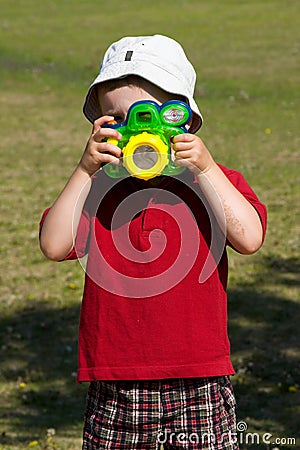
Photography
Basic photography online lesson (click here)
The 6 Things To Know
•Know your camera
•Hold the camera still
•The 2-second rule
•Take a few more
•Tell a “story”
•Capture the “mood”
C . E . L . L .
•C omposition
•E xposure
•L ens
•L ight
Photo Galleries
Free Online Lessons
•http://www.photosecrets.com/p00.html
These are resource websites from South Miami K-8 Center - An Art Magnet School
Computer Art Technology (click on link)
Culturally Inspired Art (click on link)
Click on this link for a better understanding of Printmaking: On Printmaking
Etching/aquatint by Carmen Almécija
These are resource websites from South Miami K-8 Center - An Art Magnet School
Computer Art Technology (click on link)
Culturally Inspired Art (click on link)
Click on this link for a better understanding of Printmaking: On Printmaking
Etching/aquatint by Carmen Almécija
